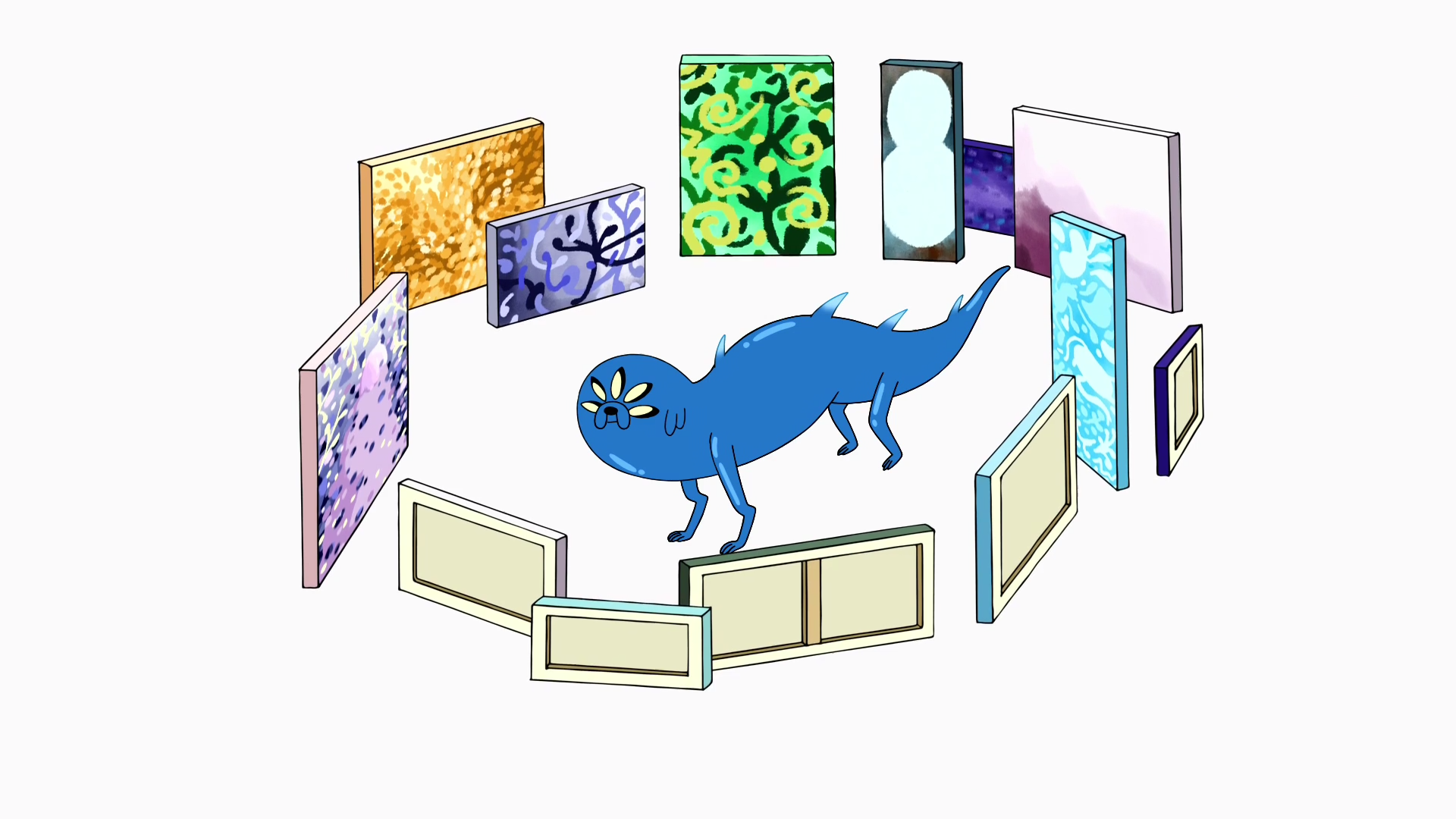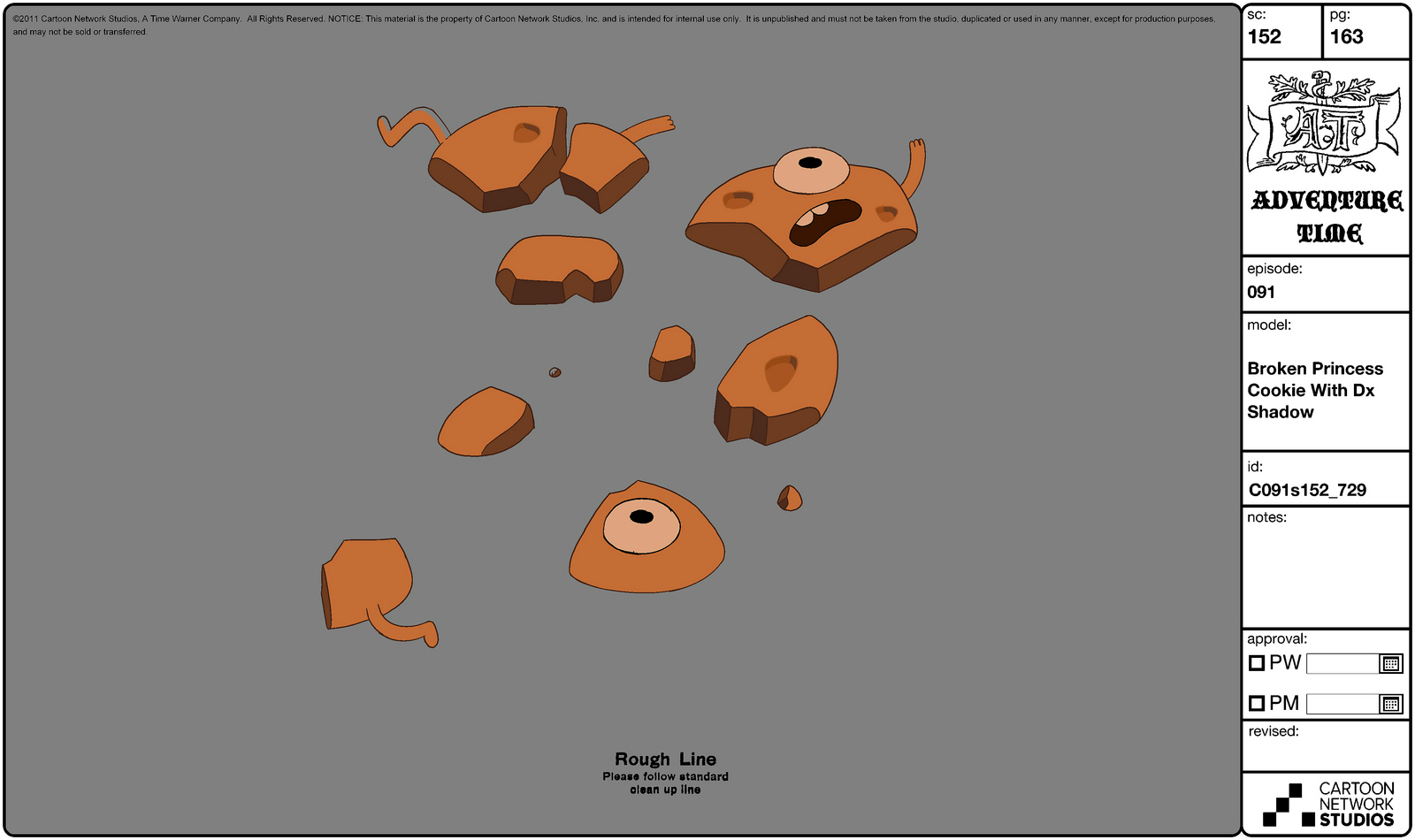Adventure Time released its finale on Labor Day, September 3, 2018, to 0.92 million people. Despite the poor treatment of the show by Cartoon Network, Pendleton Ward’s prodigy consistently provided its audience with tears and joy all the way until the closing montage at the finale’s end. Thus, to most diehard fans like myself, September 3 was a somber moment as an animation trailblazer rode off into the sunset with its last hurrah. Without a doubt, the finale was an unmatched spectacle of greatness and a rollercoaster of emotions.
In memory of the great show and its predecessors of greatness, I am here to argue that the shows from the late 2000s to early 2010s, Adventure Time, Avatar: The Last Airbender, Teen Titans, The Amazing World of Gumball, and Steven Universe specifically, are some of the best shows to ever air on television and deserve an in-depth rewatching.
Wide Audience Appeal:
“You’re dead if you aim only for kids. Adults are only kids grown up, anyway.” – Walt Disney
The world of cartoons is often stigmatized unjustly. Because of its use of unnaturally vibrant colors and its portrayal of characters performing implausible actions, it is relegated to children as a form of tranquil entertainment. As a result, American society has marked animation with a stigma, reluctant to accept its role as a mature art style.
This stigma partially grows from the popularity of animation studios like Pixar and Illumination whose target demographic is pre-adolescent children, accentuating themes of friendship and family that most others would see as common knowledge. On the other side of the thematic spectrum are cartoons like Archer, South Park, and The Simpsons who utilize animations’ freedom of expression as a method of criticizing societal tendencies and politics. Generally seen as adult and mature, because of the nature of the events that they satirize, these shows have provided society with examples of cartoons directed towards adults, but the extreme nature of these popular show’s demographics has left little room for society to accept shows directed at children and adults.
Live-action television and cinema, however, have perfected their appeal to the wide arrays of potential audiences. Their inclusive narratives and characters allow for groups both young and old to emotionally invest themselves in the stories they tell. Television shows such as Breaking Bad have elaborately portrayed human emotion in its rawest form, attracting adult audiences with themes of familial struggle and the limits of the human drive as well as younger audiences who crave its action sequences and intense story arches. Some shows, such as Game of Thrones, have gained both young and adult audiences through their appeal to imagination and fantasy, connecting with the youth and the evanescent creativity that they wish to keep while pulling in more mature audiences that wish to reconnect with this fleeting imagination. Then, there are sitcoms like Golden Girls and The Office, shows that attempt at relating to its audience by relying on comedic situations and the cliches of normal life. Reality television has also managed to gain both young and adult audiences through shows like American Idol and Survivor, which rely on appeals to human desires and emotion, feeding off of the imagination and dreams of its audiences to gain viewership.
Cartoon Network’s best shows, however, have successfully done what many cartoons have failed to achieve, an appeal to both adults and youth. Often times, when people think of cartoons appealing to adults, we turn towards shows like Robot Chick en and Family Guy, which utilize a sense of humor that is both explicit and satirical. Now, whenever people think of kids cartoons appealing to adults, it’s often done through some euphemism that flies over the heads of children and lands on a YouTube video titled Top Ten Adult Jokes in Children’s Cartoons. Obviously, events like in The Amazing World of Gumball’s episode “The Storm,” where Gumball has to “inflate” his balloon friend, Alan, provide older audiences with a couple extra laughs, but these jokes are not what carry cartoons.
en and Family Guy, which utilize a sense of humor that is both explicit and satirical. Now, whenever people think of kids cartoons appealing to adults, it’s often done through some euphemism that flies over the heads of children and lands on a YouTube video titled Top Ten Adult Jokes in Children’s Cartoons. Obviously, events like in The Amazing World of Gumball’s episode “The Storm,” where Gumball has to “inflate” his balloon friend, Alan, provide older audiences with a couple extra laughs, but these jokes are not what carry cartoons.
The cartoons that define the genre are the ones that go above and beyond, to the point of potential cancellation and censorship because the message they contain might be too direct. For example, in Adventure Time, the relationship between two female characters, Princess Bubblegum and Marceline, could never be explicitly made canon until the finale because countries, where homosexual media is banned, would refuse to air the show. Also, a common motif throughout storytelling is the idea of the parentless protagonist, so when the hero reunites with their family, it makes for touchy subjects that often stretch the boundaries of what these creators can air, like in Steven Universe and Avatar: The Last Airbender.
Moreover, cartoons appeal to adults through one of their most unique and redeeming qualities…
Mature Thematic Objectives:
“The shapes are always changing. Changing is their normal state. Like us. Even if we’re not changing on the outside, we’re changing on the inside constantly” – Jake, Adventure Time
“Humans just lead short, boring, insignificant lives, so they make up stories to feel like they’re a part of something bigger.” – Pearl, Steven Universe
“That’s who you are. That’s not me. I’m not a hero. I don’t save the world. I’m just a girl with a geometry test next period and I haven’t studied.” – Terra, Teen Titans
The idea of themes is something that English classes have worked into our heads for years. Every true piece of art, whether it be written, painted, spoken, etc., has a purpose, a message about the human experience, the artist using their work as a catalyst for commentary on humankind, not just on the society they live in. Animation is no exception. The usage of physical exaggeration and anthropomorphic characters has allowed animators to reveal to children and adults themes that live-action television cannot.
Also, because their primary audience is children, cartoons have to illustrate their underlying meaning while remaining tailored to kids, a skill not many other shows can boast. This conflict often leads to the stigma of cartoons as childish though since sometimes these shows give in to their network’s wishes of creating innocent, uncontroversial material. The examples of Adventure Time and The Amazing World of Gumball underscore this since the first seasons of these two shows are undoubtedly childish, focusing on themes of respecting your parents, teamwork, and other common themes found throughout child entertainment. Oftentimes, this acquiescence to Cartoon Network is what ruins shows though. For example, Regular Show never could fully explore mature themes until its ending where it changed its themes of friendship to that of loss and sacrifice. However, both Adventure Time and The Amazing World of Gumball creatively used this as a platform to highlight themes of maturing and growing up.
In the example of Adventure Time, the voice actor, Jeremy Shada, for Finn aged with the character. In turn, throughout the show, Finn’s voice cracks and eventually deepens. This is also evident in the songs found throughout the show, going from auto-tuned to unedited by the series’ end. Most importantly though, Finn’s worldview drastically changes by the finale, going from a dungeon crawling action hero always picking a fight to a force of democracy and peace hellbent at preventing war, going from wallowing on the ground because he was not the age of his crush to contemplating the meaning of life after killing a double of himself.
The Amazing World of Gumball, in episodes like “The Kids,” discusses growing up and the effects that physical changes have on the main characters’ lives. In other episodes like “The Shell,” one of the protagonists has to overcome a physical change that causes her to reject her own personal image, feeling unfit to live in society, which culminates in “The Transformation” where she must convince her own parents to come to term with her change.
Such themes are not mutually exclusive to children because no matter one’s age, like Jake the Dog once said, “Even if we’re not changing on the outside, we’re changing on the inside constantly.”  Every person has some personal conflict or morally ambiguous issue they will have to face, and cartoons illustrate these everyday occurrences to perfection. For example, Steven Universe’s Amethyst is the embodiment of the attention hog, desiring social acceptance by becoming outgoing and riotous at times. Aang, in Avatar: The Last Airbender, is forced to accept a role, which he feels unprepared for, reluctant to accept his fate and the pressure accompanied with it.
Every person has some personal conflict or morally ambiguous issue they will have to face, and cartoons illustrate these everyday occurrences to perfection. For example, Steven Universe’s Amethyst is the embodiment of the attention hog, desiring social acceptance by becoming outgoing and riotous at times. Aang, in Avatar: The Last Airbender, is forced to accept a role, which he feels unprepared for, reluctant to accept his fate and the pressure accompanied with it.
The thing that separates these characters from other entertainment, however, is that these characteristics do not define them. Amethyst is not defined as an attention hog nor is Aang defined as someone who fears responsibility. These themes are simply reflected in their actions and words, resonating with the audience who often feel as the characters do, something that most live-action shows and other cartoons fail to properly incorporate.
As a result, many fictional, live-action shows can be defined as either cheerful or dark, an extreme label that exposes these shows as one-dimensional, failing to create realistic characters with true emotions, utilizing simplistic, personality cliches instead. Cartoons contain a unique complexity of desolation with an undertone of lightheartedness to their stories that puts them above most others, but a show cannot be defined by the underlying messages without a proper story to go along with it.
Immersive Storytelling:
“There’s always room for a story that can transport people to another place.” – J.K. Rowling
Themes without a story or metaphor to accompany them reduce them to cliche, overused philosophies. This is often why educational shows are unbearable to the adult mind. Everyone knows that teamwork and family are important, but the intended audience of these themes might not comprehend it. Thus, shows like Arthur and Backyardigans would become unbearable to those older than ten because their conflicts lack complexity and entertainment, force-feeding the audience its messages.
Shows like Teen Titans and Avatar: The Last Airbender, however, have perfected the story arc method of telling a coherent tale, communicating themes through the gradual development of characters, a development that the audience observes along the journey. The other three cartoons I’ve discussed, Adventure Time, The Amazing World of Gumball, and Steven Universe, take their storytelling to a different level. Every eleven-minute episode is different, telling a unique story that captivates its listeners, connecting them to every intricacy in their worlds. Through this connection, these cartoons are able to create a congenial bond between the characters and the audience that helps flush out all kinds of emotions that the listener can relate to.
Obviously, these two methods of storytelling are not exclusive to the cartoons as I have divided them. After all, Adventure Time and Steven Universe both follow an overarching plot, but with such a large number of “filler” episodes that diverge from the central story, they often explore the depths of their animated worlds separately. As a result, this lack of cohesion prevents these shows from achieving an adult audience.
While Teen Titans and Avatar: The Last Airbender have found the most critical exclamation because of their overarching plots, the other three have failed to find such success. Due to the nature of their storytelling methods, the shows seem sporadic and improperly written, as if they do not have a story to tell. Admittedly, this argument might work for The Amazing World of Gumball, but the other two should not be subject to such criticism; rather, their ability to carry an overarching plot while also exploring imaginative lands is something live-action shows often fail to do.
Part of what makes stories like Harry Potter and Lord of the Rings so great is the world they live. The endless rabbit hole of lore that one could be lost in is simply a result of the stories’ ingenuity, creating elaborate and intense stories out of a stranger seen in the background of one of the movies. Similarly, Adventure Time, The Amazing World of Gumball, Avatar: The Last Airbender, Teen Titans, and Steven Universe have this ability to lose their audiences in a complex world, filled with realistic characters who express true human emotion.
While the spectacular plots and adventures that each show provides is something I could go on forever about (the IMDB scores for these shows speak for themselves), I would like to point out that the originality of their plots is not strictly because the creators have outdone their live-action competition. Also, their storytelling and complex worlds are not new to entertainment, but they have excelled in immersing audiences into their worlds, in part because of what makes cartoons, cartoons.
Usage of Animation:
“Animation is not the art of drawings that move but the art of movements that are drawn.” – Norman McLaren
In cartoons like Spongebob Squarepants, the animators’ works are not bound by the realm of reality. As a matter of fact, in the episode “Face Freeze,” the animators showed the audience just how monstrous and baffling the pens’ creation could be, creating some of the most horrendous faces in animation history. The use of exaggeration in cartoons is one of the beauties of the art style. The characters limits are infinite.
Most importantly, this capability allows the audience to depict the characters’ emotional state. The energetic, excitable character is often given the most comedic faces like Sokka in Avatar: The Last Airbender or Beast Boy in Teen Titans. Anger is often represented through demonic symbolism or hyperbolized parts of the character’s bodies. However, the authentically despondent character’s animation is most similar to reality. There is a lack of exaggeration, a normalcy that mirrors the emotion’s effects, desolate and barren.
Often overlooked, this portrayal of emotion through animation is special because it helps connect to the listener. The haughty man feels big and the hopeless man feels small, and live-action shows often struggle at achieving this direct communication with the audience, creating comically, confusing scenes that fail to recreate true emotions. As a result, exaggerated animation is not just an extension of the characters but also a bridge for the listener to the story.
Also, the use of animation is what often provides comedic relief. In Adventure Time, The Amazing World of Gumball, and Steven Universe, the eleven-minute restriction often disallows for the shows’ lighthearted undertone to shine through its episodes, so the creative liberties these shows have at their disposal allow for humor to sneak in anywhere. For example, Adventure Time, in  “Princess Cookie,” uses an anthropomorphic cookie in order to hide the truth of the traumatic climax that instead of ending in suicide, ended in a fragmented cookie that was pieced together. At the same time though, the episode never lost its theme because of the animation; rather, it added the lighthearted undertone, allowing for the cookie to redeem himself following the events of the episode.
“Princess Cookie,” uses an anthropomorphic cookie in order to hide the truth of the traumatic climax that instead of ending in suicide, ended in a fragmented cookie that was pieced together. At the same time though, the episode never lost its theme because of the animation; rather, it added the lighthearted undertone, allowing for the cookie to redeem himself following the events of the episode.
In turn, animations are what turn cartoons into metaphors of life. They are wildly-exaggerated stories that express raw emotion, easily resonating with its audience whether it be adults or children. Behind the hyperboles and ridiculousness is the underlying message, a message made obvious to the adult capable of understanding the parable but hidden to the child laughing at the silly facial expressions. This discreteness is what once again separates the great cartoons from the great live-action shows. While live-action television often forces their themes down your throat with predictable dialogue and predictable stories, cartoons have the ability to conceal their themes to the audience behind vibrant colors and characters.
Reflection of Humankind:
“Comics are an international language, they can cross boundaries and generations. Comics are a bridge between all cultures.” – Osamu Tezuka
 For those who do not know, the man quoted, Osamu Tezuka, is known as the father of Japanese animation, better known as anime. In the wake of World War II, Japan was crushed, both economically and socially. As most Japanese artists would do during this time, they reflected the despondency of post-WWII Japan in their works, and Tezuka was no exception, utilizing the fledgling animation industry as a platform to express the populace’s emotion. One of his first works, Astro Boy, highlighted this, containing themes of loss, regret, and death.
For those who do not know, the man quoted, Osamu Tezuka, is known as the father of Japanese animation, better known as anime. In the wake of World War II, Japan was crushed, both economically and socially. As most Japanese artists would do during this time, they reflected the despondency of post-WWII Japan in their works, and Tezuka was no exception, utilizing the fledgling animation industry as a platform to express the populace’s emotion. One of his first works, Astro Boy, highlighted this, containing themes of loss, regret, and death.
However, in the western hemisphere, the United States rejoiced in their victory with a passion that resonated in the artistic works of the time period. One such outlet was cartoons where Walt Disney captivated the hearts and minds of the U.S. with its whimsical shows and characters, accentuating the joy and relief of society at the time. Thus, most cartoons from that time period contained little meaning, relying on entertaining the pleased masses instead.
 As a result of these differences, many Americans shunned and still shun Japanese anime because of its unorthodox storytelling and differing art style despite the fact that Tezuka based his designs off of American animations like that of Bambi. Over the past couple of decades though, the mature stories and style of Japanese works have influenced western cartoons as evidence by Teen Titans, written by a Japanese American, and Avatar: The Last Airbender, which is heavily influenced by Asian culture and motifs. Truly, if one compares the best shows of western culture to the best shows of their eastern counterparts, one could easily point out the lack of true emotion and compelling realism in western entertainment.
As a result of these differences, many Americans shunned and still shun Japanese anime because of its unorthodox storytelling and differing art style despite the fact that Tezuka based his designs off of American animations like that of Bambi. Over the past couple of decades though, the mature stories and style of Japanese works have influenced western cartoons as evidence by Teen Titans, written by a Japanese American, and Avatar: The Last Airbender, which is heavily influenced by Asian culture and motifs. Truly, if one compares the best shows of western culture to the best shows of their eastern counterparts, one could easily point out the lack of true emotion and compelling realism in western entertainment.
Exploring themes of the ordinary man, anime, as well as western cartoons, have been reflections of their respected society. They act as messengers, exposing the issues that the ordinary man faces in an easy to understand form. Such is the reason why political cartoons were successes during the height of their popularity. With a ubiquitous illiteracy problem, revolutionaries could not rely on written words to reach the hearts of their peers; instead, cartoons were used to display everyday injustices in the form of an elaborate picture, personifying objects and exaggerating the human body in order to tell a story.
This trope lives on in shows like South Park and Family Guy, using their platform to point out injustices and oddities throughout society, however, they do so without true emotion and the compelling realism that Tezuka injected into Japanese anime. While Tezuka explored emotional themes, using post-WWII as a backdrop for his mature messages, western cartoons have simply pointed and laughed at societal issues, failing to appeal to the hearts of the common man and child, flooding society with shallow stories. However, there are five cartoons in my opinion that best achieve the purpose of animation while still remaining true to both their youth and adult demographics: Adventure Time, The Amazing World of Gumball, Avatar: The Last Airbender, Teen Titans, and Steven Universe.
Obviously, I’m biased towards these shows because all five were first aired during my childhood, but no one can reasonably argue that shows like Courage The Cowardly Dog or Scooby-Doo are reflections of American society. These five cartoons accentuate emotions that are distinctly human and reflect humanity’s struggles and experiences, something that shows, like Game of Thrones, The Big Bang Theory, and the Walking Dead, lack, which oddly enough, are the first three results when you type “most popular television shows” into Google.
Now, I am not arguing that live-action television sucks though. After all, number five on that list of “most popular television shows” is Breaking Bad, a series that truly exhibits the ideals of a spectacular, once-in-a-lifetime show. Furthermore, a healthy amount of live-action shows still make for entertaining television, but they lack the substance found in cartoons. Hence why I think that the world of animation, a place labeled as immature and childish, is where the best stories and reflections of ordinary life are found.
So go watch some cartoons. It would make for a great Netflix binge.






